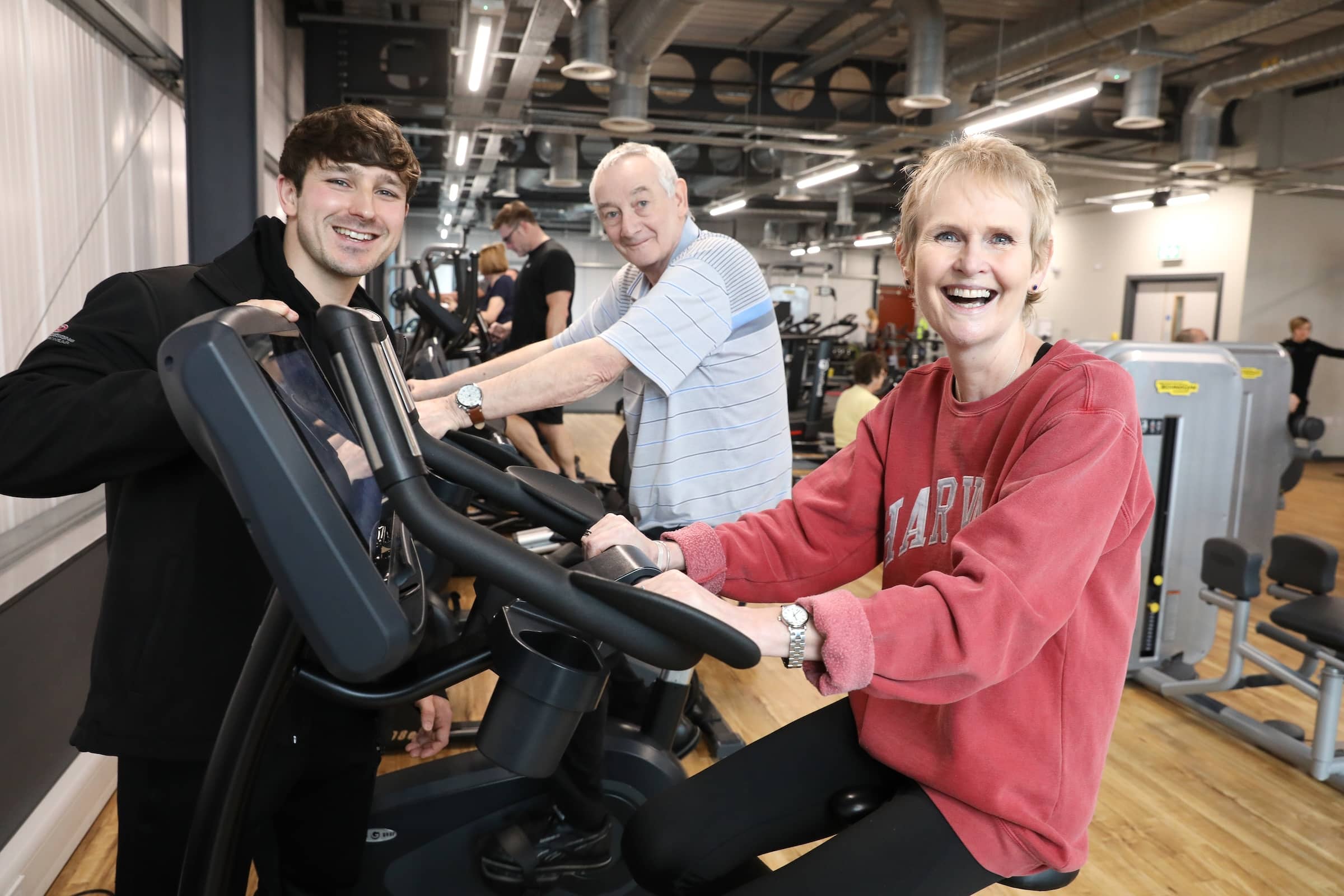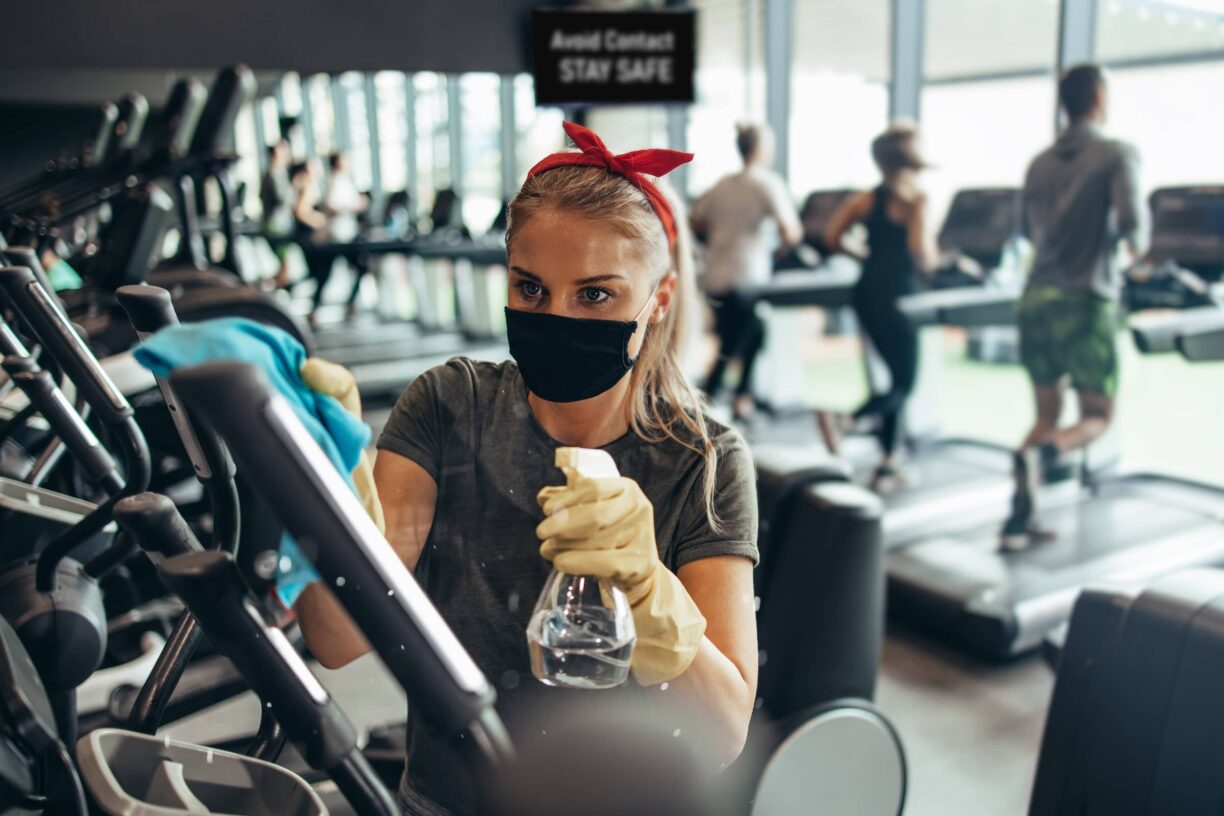Prehab4Cancer is being hailed by patients across Greater Manchester and parts of Cheshire as a game-changer in the quest to stay active, nourished and positive during cancer treatment.
The latest annual findings from this world-leading exercise, nutrition and wellbeing programme reveal a marked boost in aerobic capacity, lower limb function and overall strength – all crucial contributors to a better quality of life.
To coincide with World Cancer Day on 4 February 2025, the Prehab4Cancer (P4C) team is shining a light on how early engagement in exercise, healthy eating and emotional support can help transform a cancer journey.
Backed by GM Active and GM Cancer Alliance, P4C offers patients personalised sessions before, during and after treatment, ensuring they’re physically and mentally prepared for whatever comes next.
At present, P4C is offered to patients living with lung, colorectal (bowel), oesophageal and gastric cancers (often grouped as upper GI cancers).
Colorectal Health and Wellbeing event this morning! An amazing day, listening to patient reps share their stories 👏🏼 so lovely to hear from patients who have been supported by Prehab4Cancer through their treatment! pic.twitter.com/GFyOoz915a
— prehab4cancer (@prehab4cancer) November 7, 2024
Recent data underscores improvements in general health and physical activity levels, measured through various benchmarks like the 6-minute walk test and strength tests for the lower limbs and grip.
Patients are also showing better nutritional status, as indicated by a drop in Patient-Generated Subjective Global Assessment scores, and higher self-efficacy in managing their own recovery.
In other words, this is about more than building muscle; it’s about equipping people with the tools to handle the effects of surgery and oncological treatments, all while nurturing a sense of control.
Jack Murphy, who leads the P4C programme, is thrilled by the high rate of referrals – nearly 2,000 per year for two years running – and the steadily rising uptake.
“We’ve had another positive year for referral numbers in to the service – two consecutive years of approximately 2,000 referrals, highlighting the success and reputation of Prehab4Cancer.
“There’s been an improvement in the uptake and engagement into the service too, with an average of 72% across all patient groups.
The return to face-to-face delivery has been key to this and the percentage uptake is now similar to pre-Covid levels despite an increase in referrals.
“A cancer diagnosis can have a massive impact on a person and increasing physical activity levels during cancer treatment is often the last thing on a person’s mind.
“But with physical activity and our support, people can take a proactive role in their own care and have a positive impact on their health outcomes.
“As a result, they feel empowered to take back control of the diagnosis, whilst optimising their physical and mental condition, to better cope with the rigours of cancer-related treatment.”
These findings build on independent research highlighting why patients enrolled in P4C are often discharged from hospital sooner and recover more smoothly.
For colorectal patients, for instance, prehab participants on average spent 36 fewer hours in hospital, with 10 fewer hours needed in critical care.
Beyond the obvious morale boost for patients eager to return home, these shorter stays mean hundreds of bed days are freed up for other patients needing treatment.
In turn, the capacity and flow within local hospitals improve, making care more efficient and cost-effective.
What does a P4C schedule actually look like?
So, what does a typical week on Prehab4Cancer actually involve? Well, it’s not about slogging away in the gym for hours on end.
Patients are encouraged to fit in up to three sessions a week, mixing bursts of moderate to high-intensity exercise with more gentle movement—think walks in the park, a bit of gardening, or just keeping active in whatever way feels right.
A standard session might kick off with 20 minutes on a bike or treadmill, pushing the heart rate up to around 60-80%, before moving on to 15 minutes of muscle-strengthening exercises targeting key areas like the legs, core and shoulders.
It’s all about building stamina, regaining strength, and making everyday tasks feel easier—whether that’s tackling the stairs, carrying the shopping, or simply enjoying life with a little more energy.
Patient Feedback: What They’re Saying About P4C
The glowing feedback from patients speaks volumes about the impact of Prehab4Cancer. RN from Trafford says: “I am extremely grateful for having had the opportunity to take part in the Prehab for Cancer programme and indebted to those involved in its delivery for helping me to recover quickly from surgery and cope with the trials of undertaking chemotherapy treatment for cancer of the colon.
“I have really benefitted from the exercise programme and can see the results, as I have significantly improved my fitness and strength levels on all the measures over a four-month period.
“Anyone who is offered this programme and is trying to make a decision about whether to join it should not be put off.”
RA from Bury shares a similar experience: “Having had investigative procedures soon after my 56th birthday, I was diagnosed with evidence of bowel cancer – small, and caught early, but still a shock.
“After surgery was agreed as the way forward, I was approached by GM Active and offered Prehab 4 Cancer. Gym induction by Karly was simple and well explained, setting realistic goals and a set of exercises aimed at stamina and strengthening core in preparation for surgery, including some workbooks and home exercise schemes.
“Pre-op assessment indicated improvements in walk-test and sit-to-stand which was nice. The team followed up soon after surgery to monitor my early recovery.
Advice more recently has been on how to safely return to exercise and progress this on comfortably.
Thanks to successes like these, Prehab4Cancer has become a beacon of hope for people grappling with the challenges of cancer and its treatments.
By focusing on exercise, nutrition and emotional wellbeing, this innovative approach is proving that patients can take the driver’s seat on their cancer journey – and that there’s real power in movement, no matter how daunting the road ahead may look.





